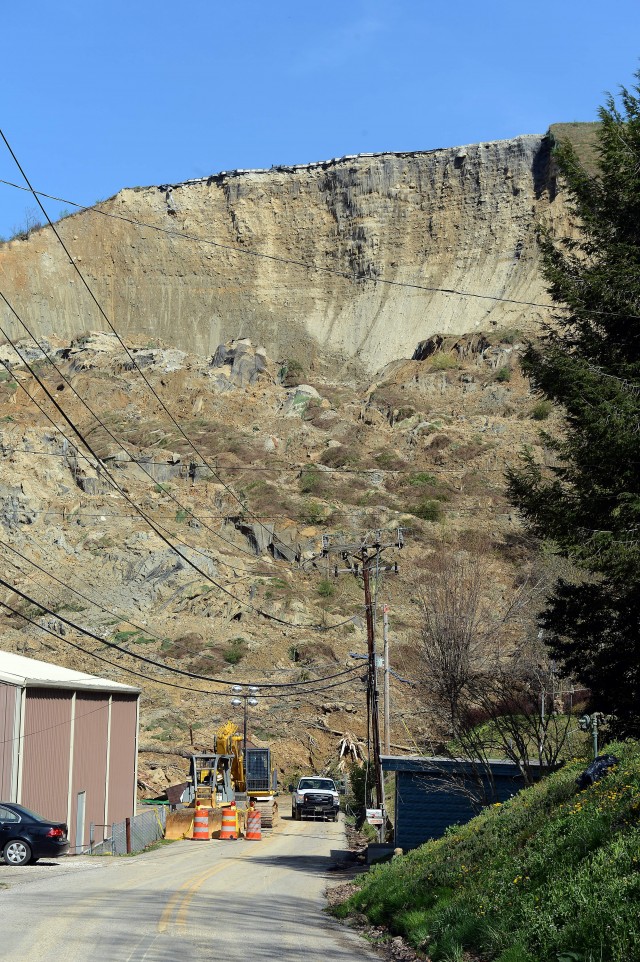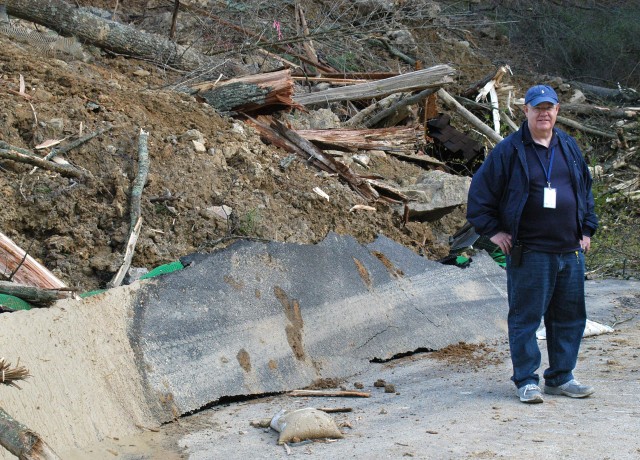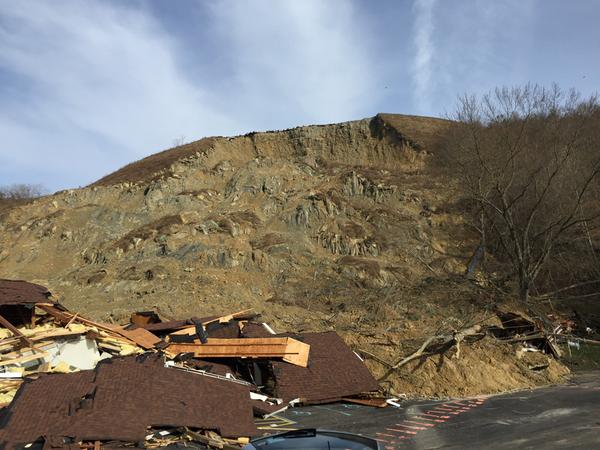14 April 2015
Yeager Airport landslide: on the move again
Posted by Dave Petley
Yeager airport landslide
News reports yesterday indicated that the Yeager Airport landslide had another significant movement event at the end of the weekend (for reference my original post is here, this is my post with videos of the site, this post looks like the landslide history of the site, and this one examines reports that the fill slope was moving two years before the landslide occurred) . In many ways I don’t think that this should be considered to be a major surprise – the back scarp of the landslide was (and still is) composed of fill that has inadequate support. The Charleston Gazette has some nice images of the landslide taken yesterday, including this one of the main slide mass and the back scarp:-

Courtesy of the Charleston Gazette
.
This is an image from (a similar though not identical) perspective taken at the time of the main failure:
.
And this is the two side by side for comparison:
On first inspection it appears that a large block has detached from the left side of the landslide scar (as viewed from the foot of the slope), as indicated above. The darker material on the more recent image appears to indicate the location of this block prior to collapse. Bob Aaron has this view on his Twitter feed, taken from a different perspective, which gives a clear view of the detached block:
It appears that the weight of this new material on the debris pile caused further movement on the debris pile below, as shown by these two images, also from the Charleston Gazette:

Courtesy of the Charleston Gazette
.

Courtesy of the Charleston Gazette
.
This rolling up of the asphalt road is consistent with deeper movement in the landslide mass, which in turn is consistent with loading from a failed block at the crown of the landslide. It appears to me that these is still a steep slope at the rear of the landslide formed from very weak materials, so further failures seem likely. These failures will probably load the debris pile further, so further movement of the toe of the Yeager Airport landslide slide seems possible.
Further rain is forecast for the next few days in this area.





 Dave Petley is the Vice-Chancellor of the University of Hull in the United Kingdom. His blog provides commentary and analysis of landslide events occurring worldwide, including the landslides themselves, latest research, and conferences and meetings.
Dave Petley is the Vice-Chancellor of the University of Hull in the United Kingdom. His blog provides commentary and analysis of landslide events occurring worldwide, including the landslides themselves, latest research, and conferences and meetings.
The asphalt distress may not necessarily be evidence of deeper movement at the toe. This may have been picked up frictionally and pushed into place. Several years ago in Northern California on Highway 101 north of Garberville, CA, a slide mass creeping out onto the 4 lane highway caused the pavement to detach from the base rock and slide forward, and to either side in a relatively uniform sheet as the slide mass spread out on the roadway. There were well-defined, discrete shears on either side of the sliding pavement and compressional folds.
http://www.northcoastjournal.com/imager/not-long-after-the-hillside-slid-onto-high/b/original/2176346/938a/5575318470_4f46ef72b7_b.jpg